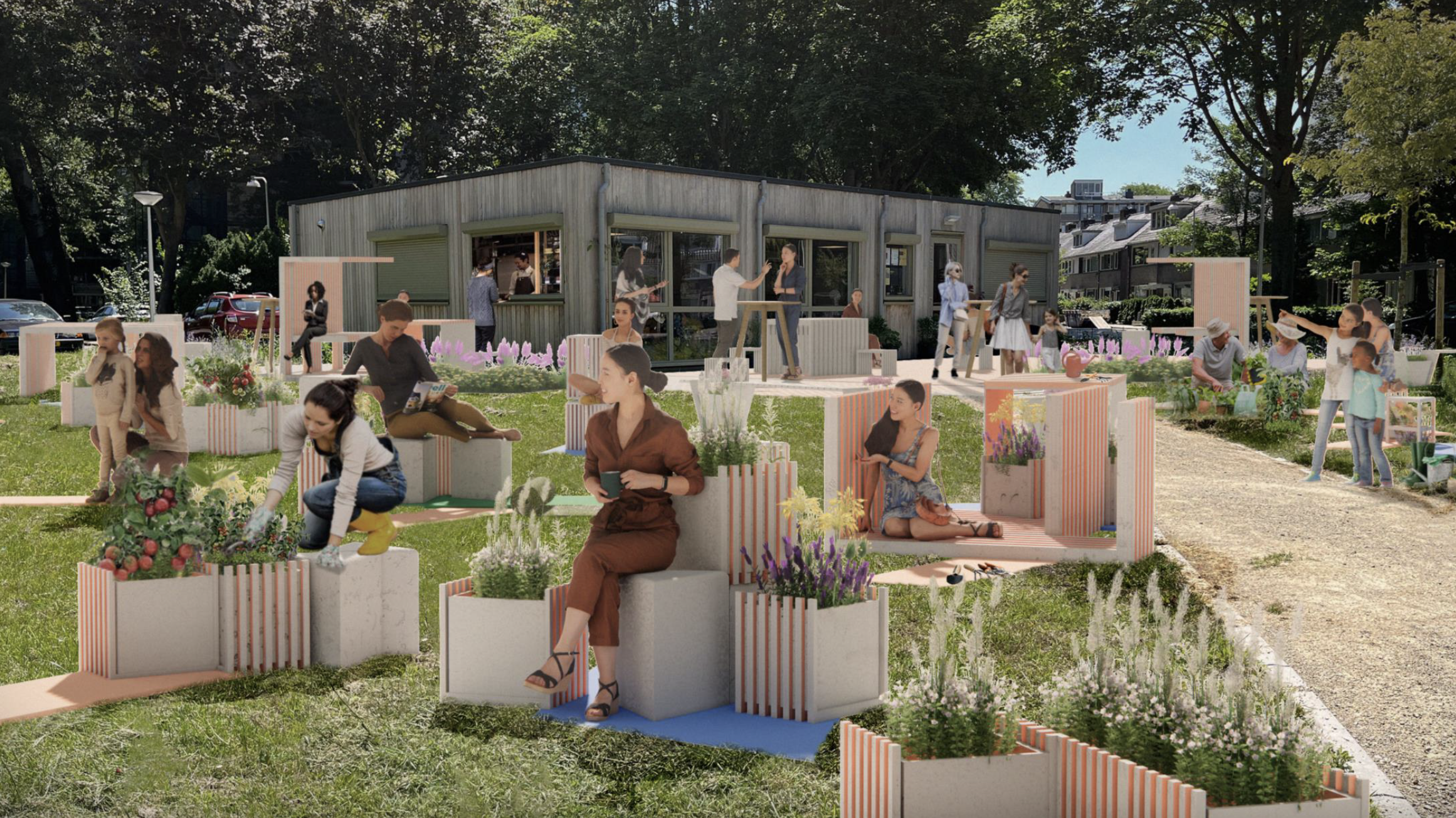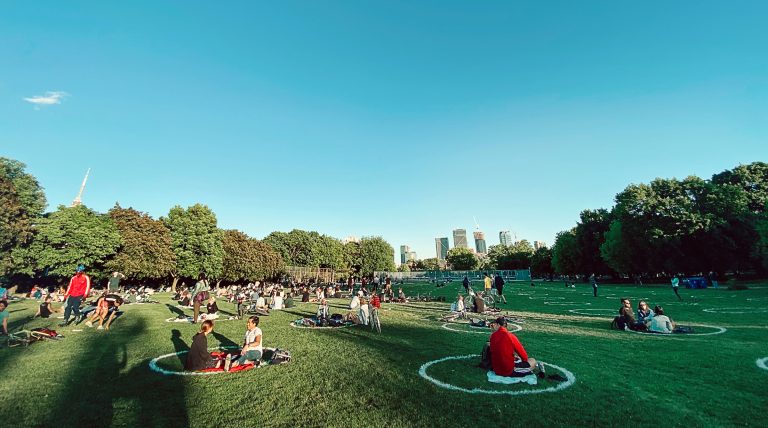Designing human / non-human public spaces for neighborhood resilience: Design Exploration 3 – Activating underused spaces for a resilient Diemen
This case study report describes one of three case studies conducted as part of the ZonMw project ‘From Prevention to Resilience’. Each design case is described in a separate report, each of which can be found in the Publications section here. In each of the design cases, a concept version of our design perspective Human/Non-human public spaces was implemented. At the time of the design cases, we still referred to this design perspective as the ‘Design Framework for Neighbourhood Resilience’. Before reading one or more of the reports, it is useful to first get familiar with this initial concept version of our design perspective (available here). The three reports are an intermediate step towards a publication in a scientific journal, in which we analyze and discuss the three design cases together. For this reason, the reports should be considered detailed accounts of the design cases and findings, while not yet coming to general insights and conclusions.
UNSx and the Rodekruis Laan in Diemen
UNSx is UNStudio’s experience design team, which creates physical and digital experiences through a people/planet-centred approach. The team is composed of architects, computational designers, product designers, creative strategists, VR/AR specialists and sustainability consultants. With this heterogeneity of professions, the team aims to design solutions for the built environment that create a connection between people and the planet, as well as the physical and digital realms. UNSx is committed to delivering inclusive solutions through a co-creative design thinking methodology, which involves stakeholders and users in the process and informing the decision-making.
The Amsterdam-based team works on different scales and combines various disciplines, from product design, to strategic and service design, and the built environment. They aim to enhance the user and the stakeholder experience, and to address systemic challenges while accounting for both human and planetary needs (UNStudio, 2022). Recent projects include adaptive and responsive work environments (Soliscape, 2020), biometric pods that help workers lower their stress levels (Reset, 2017), and deep research on the properties of new materials (Coolest White, 2019). They also collaborate with other UN Studio departments on area development projects in the Middle East.
The brief
UNSx was invited to develop a design solution to answer the housing association Rochdale’s need for a more resilient neighborhood (i.e. ‘sterkte buurten’ vision) in Diemen. Diemen is a municipality adjacent and well-connected to Amsterdam and serves as a commuter town to the capital. Part of the assignment was to apply and test the first version of the Design Framework for Neighbourhood Resilience in their design process.
The assignment revolved around a social housing complex adjacent to Diemen train station and owned by Rochdale. The Rode Kruislaan complex is a typical 1960’ development on the outskirts of the city surrounded by abundant but unprogrammed green space. It struggles with social challenges characteristic of similar developments across the country, such as a lack of public space identity and social proximity. The ten buildings of Rode Kruislaan are interlinked into a mega-structure with a strong division of front and backside: on the front side, semi-courtyards accommodate playgrounds and a recently completed neighborhood pavilion, while the parking lots are on the backside, lacking ‘eyes on the street’ (Jacobs, 1961) and thus social control. The development suffers from a high rate of criminality, partially facilitated by the interlinked buildings where connecting paths, and multiple entries and exits provide easy escape routes, and disturb residents. Involvement in criminal activities begins in the area as young as 12-year-old. These activities lead to a feeling of insecurity among residents. Proximity to the train station, and Amsterdam center, as well as the availability of green space might provide opportunities for positive change. Rochdale was inspired by the motto ‘from Prevention to Resilience’ and asked for social and/or spatial solutions that are actionable, but that could also serve as conversation pieces to mobilize discussions within Rochdale and with the municipality.



















